Thunderbolt on Windows Part 2: Intel's DZ77RE-K75 & ASUS' P8Z77-V Premium
by Anand Lal Shimpi on June 3, 2012 2:08 AM EST- Posted in
- Motherboards
- CPUs
- Intel
- Asus
- Thunderbolt
- Ivy Bridge
- Chipsets
Performance
In our earlier look at Thunderbolt under Windows I didn't have a working Pegasus driver to really push the limits of the interface's bandwidth. With that now changed, I went to work. I started by pulling out all of the hard drives from the Pegasus R6 and installed four SSDs. I didn't have four identical drives so I threw in a mix of SF-2281 based drives and Vertex 4s. The lowest common capacity was 240GB so the resulting logical RAID-0 drive I built was just under 1TB in size. I then ran a 128KB sequential read test using Iometer to see what sort of performance I could get from the setup:
With this configuration, I achieved a very respectable 922MB/s. Note that the fastest speed I ever attained under OS X was 1000MB/s so we're not all that far off the peak. To try and move the needle a little further I hooked up the SSD based LaCie Little Big Disk and performed a 128KB sequential read across both the LBD and the SSD equipped Pegasus:
Performance moved up a bit to 933MB/s but it's clear that we should've seen a bigger increase in performance from adding another two SSDs to the chain. The fact that performance didn't go up tells me that we're reaching the limits of the interface.
As a last ditch effort I added two more SSDs to the Pegasus R6 chassis, a pair of 128GB Samsung SSD 830s in RAID-0. I repeated the 128KB sequential read test, but now across all four drive targets (2 in the LBD, and 2 RAID arrays in the Pegasus R6):
Unfortunately, performance didn't change. It's safe to say that on a single Thunderbolt port you can get just under 7.5Gbps of bandwidth, in one direction, to a chain of devices. Each Thunderbolt port should have two channels however; the second should allow DisplayPort traffic to be carried without impacting performance. To test this theory I repeated the test but with Apple's Thunderbolt Display in the chain. To drive the 27-inch 2560 x 1440 panel at 60Hz you need around 7Gbps of bandwidth (more if you take into account overhead). With the display connected I repeated the transfer test:
Performance actually went up by a few MB/s, but basically remained unchanged from the earlier 7.5Gbps peak. While I never was able to hit the 8Gbps I got under OS X, that was with the very first iteration of Thunderbolt support under OS X as well as from Promise. It's entirely possible that further tuning/firmware updates have limited performance a bit since then. Either way, it's safe to say that Thunderbolt under Windows is capable of the same class of performance we've seen under OS X.
Pushing video out to the display while pulling in data from external storage devices is actually the best case scenario for Thunderbolt, but what happens if we're sending traffic out on both channels? I conducted the same test with the Thunderbolt Display attached but this time I ran a 128KB sequential write to the attached SSDs:
There's a bit of a performance drop (~6.9Gbps vs. 7.5Gbps) but it's unclear whether this is due to lower SSD write speeds or upstream bandwidth limitations for a single Thunderbolt port.
Final Words
Armed with the right drivers, Promise's Pegasus helped prove that Thunderbolt can be nearly as fast under Windows as it is under OS X. Similar to what we saw under OS X, around 7.5Gbps isn't tough to achieve over a single Thunderbolt port. There's also no significant performance impact seen when driving DisplayPort over the same interface.
The first Thunderbolt equipped motherboards are expensive, but that's mostly a function of Thunderbolt being paired with the absolute highest end models. Over time, I'd expect more ubiquitous deployment of the interface—although it's not clear how long that would take.
Intel's certification program for Thunderbolt on Windows definitely improves the behavior of devices and generally makes the interface OS agnostic. Unfortunately, the reliance on the certification program for proper functionality under Windows means the interface will get off to a rough start on its new platform. As of today, there are no publicly available certified Windows drivers for Thunderbolt devices. This will change, hopefully over the course of the next quarter, but we still need to play a bit of the waiting game.
We also need more Thunderbolt devices. Apple's Thunderbolt Display is a great example of what you can do with Thunderbolt, but without official Windows support we're left waiting again.
Despite the teething problems, I am glad to see Thunderbolt finally arrive on Windows PCs. While there's an obvious fit for mobile, I do believe that even desktop users can benefit from Thunderbolt. At the bare minimum, it can simplify external cable management with only a single cable carrying Ethernet, audio, USB, DisplayPort, etc... from your PC to your Thunderbolt hub and/or display. The fact that it can also move high performance storage out of your chassis might also enable smaller/more interesting desktop form factors. There's an obvious fit with all-in-one designs but even things like mini-ITX become a lot more flexible with Thunderbolt.


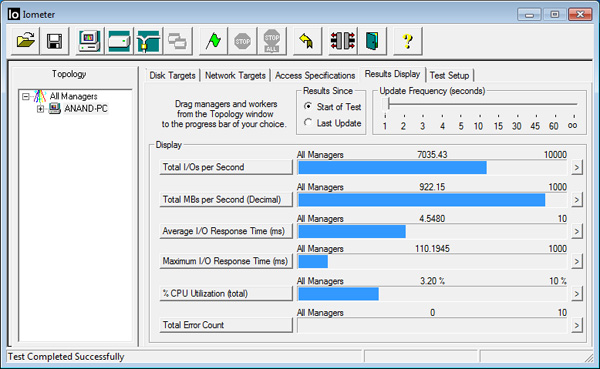
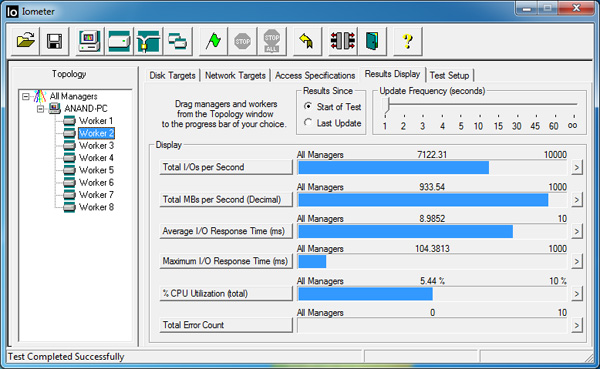
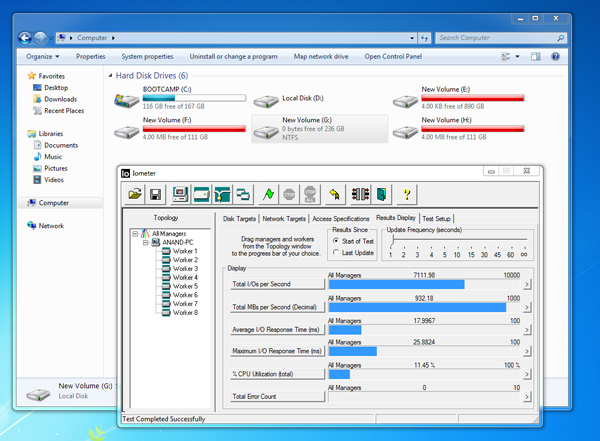
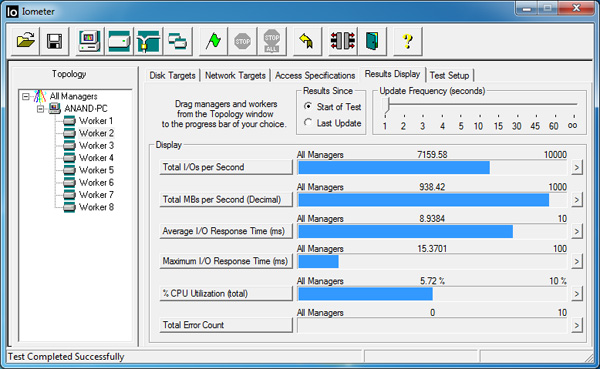
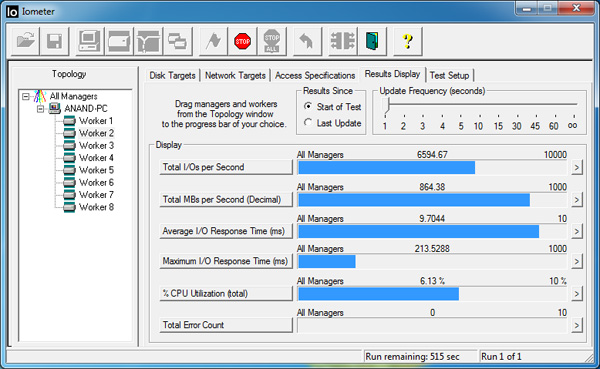
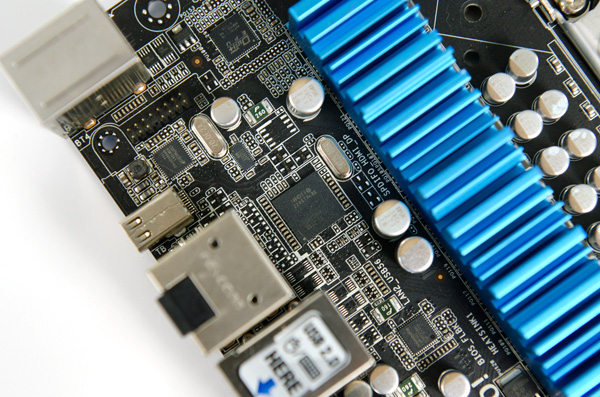
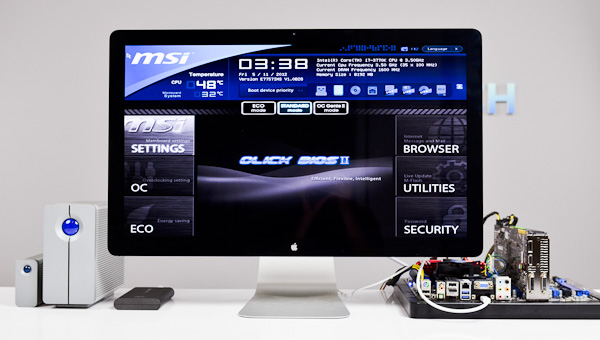
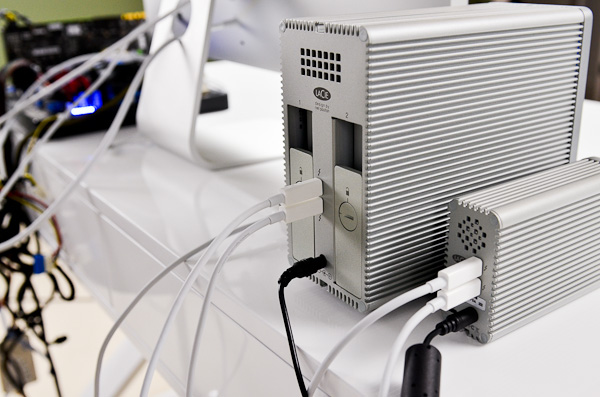








116 Comments
View All Comments
S3anister - Friday, June 8, 2012 - link
Most people have trouble making out text, yes. However, the problem does not lie with a high resolution. It's the fault of OS developers and website developers not coding for anything other than these low-res displays.S3anister - Friday, June 8, 2012 - link
You're the kind of person that said "Oh we don't need SATA my IDE drives are perfectly fine."Imagine how sweet it would be to rock a SSD on a retro IDE interface! Full-on 133, baby. Serious bandwidth.
MobiusStrip - Thursday, June 14, 2012 - link
HDMI was designed for raster-based displays. Yep, CRTs.WTF is the matter with people cheerleading AGAINST better technology?
USB is wholly unsuited to the demands of high-throughput applications like external storage and video, but you still see noobs trying to pit it against Thunderbolt. It's like they learned nothing from Firewire.
ananduser - Monday, June 4, 2012 - link
Apple "pushing" what? Apple didn't push anything, absolutely anything related to TB. Every other OEM would've have the TB interface built in from the start if Intel treated TB like USB, and that is in indiscriminate fashion. OEMs didn't built it in because they were NOT ALLOWED to do so not because it was an impediment. Apple having TB built in has nothing to do with propagating TB and has everything to do with Apple getting its marketing dollars' worth out of TB and bang the "exclusivity" factor of their macs.No sooner than you cross over the pond(if you're US) mac awareness plummets. What about TB awareness ? There is no such thing.
repoman27 - Monday, June 4, 2012 - link
Apple pushed a pile of cash in Intel's direction. They agreed to buy 20 million Thunderbolt controllers in the first 12 months that Intel was shipping them in exchange for exclusivity. I'd wager that cost them more than a quarter billion dollars for the privilege.This also ensured that 5% of PCs shipped globally included Thunderbolt in its first year of existence. I doubt any other OEM would have made that kind of gamble on a nascent technology such as Thunderbolt. I also doubt that Intel could have produced substantially more Thunderbolt controllers than they already did in 2011.
CeriseCogburn - Monday, June 4, 2012 - link
A bunch of head and pocketbook in the clouds nerds can have their neck beard tickled fancy while they do their elite e dance. It's wonderful. They can look toward the sky while they drool out how dreamy the new tech is.CeriseCogburn - Tuesday, June 5, 2012 - link
APPL didn't push it along it hogged it for itself for a whole year so it's insane fanboy base could go goggle eyed and stupid with exclusive world wide only ME handling.Duh.
MobiusStrip - Thursday, June 14, 2012 - link
"Firewire found its niche in high end A/V equipment."And this kind of comment is bogus. High end? Firewire was REQUIRED on pretty much every CONSUMER video camera from the mid-90s well into the '00s. Firewire was the only way to get video off a DV camera.
ggathagan - Sunday, June 3, 2012 - link
TB *IS* superior to USB3.If nothing else, compare USB3's bandwidth of 5 Gbps to TB's bandwidth of 20 Gbps in each direction.
That said, I think many misunderstand ThunderBolt.
It's not a device in-and-of-itself, it's a flexible I/O bus mechanism that's fairly protocol-independent.
So you can use it for FW400/800, USB 3, DP, or Ethernet.
Given that the one-year agreement just ended and PC motherboard are just now beginning to implement TB, your portent of doom is a little premature.
As with any new technology, prices drop as the technology develops and is adopted.
Intel started shipping the 2nd gen TB controllers in April and the design of the Cactus Ridge controller reduces the cost of implementing TB compared to the 1st gen.
Alexvrb - Sunday, June 3, 2012 - link
Yeah except it's an entirely proprietary interface, controlled solely by Intel, and they gave Apple an entire year of exclusivity. I'll be avoiding Thunderbolt like the plague.